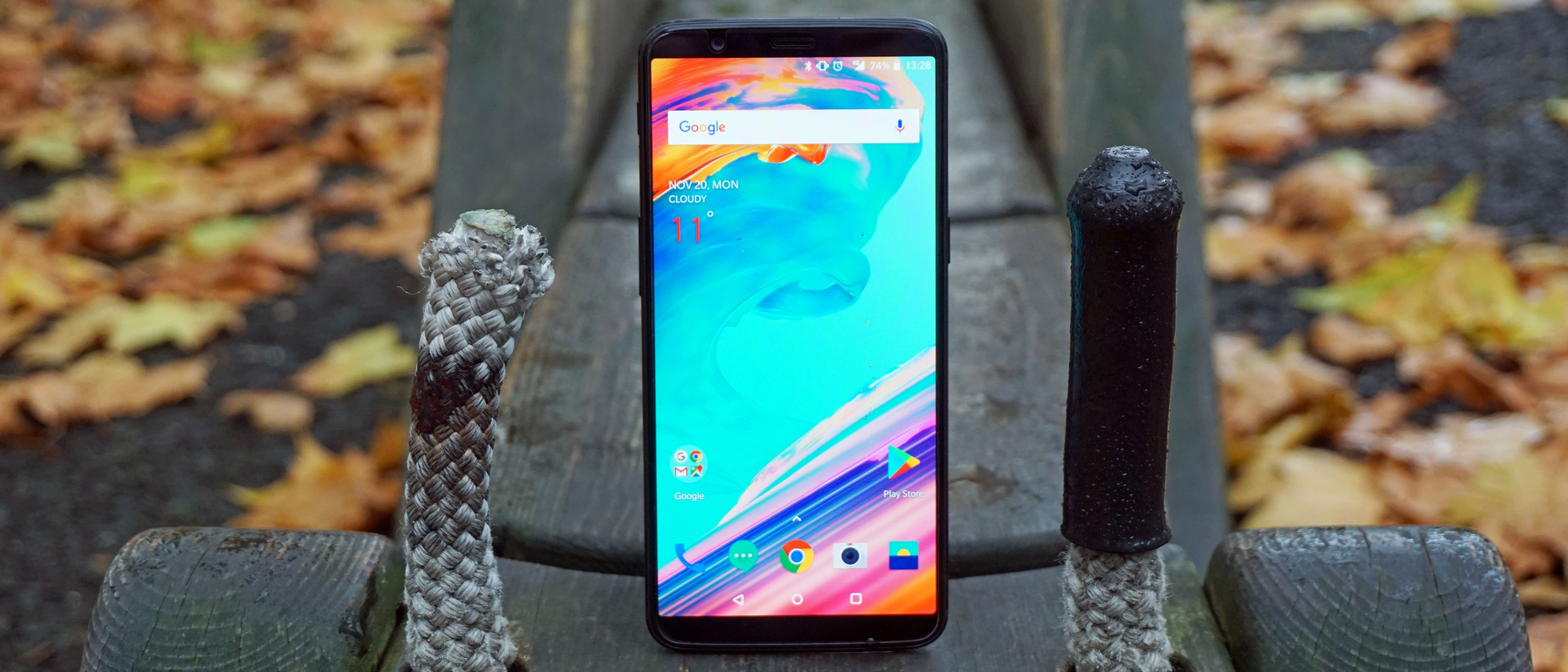TechRadar Verdict
While there are a few small compromises to consider - no QHD display, stereo speakers, expandable storage or standout camera - the OnePlus 5T represents some of the best value for money in the market. You won’t be disappointed.
Pros
- +
Flagship power at affordable price
- +
Premium look with headphone jack
- +
Face unlock and fingerprint reader
Cons
- -
Display still ‘only’ full HD
- -
No expandable storage
- -
Arrives with older Android 7
Why you can trust TechRadar
The OnePlus 5T, as the name suggests, isn't a completely new handset – rather, it's an incremental upgrade of the OnePlus 5.
[Update: The OnePlus 5T is officially off sale from OnePlus in the US, UK and Europe as the firm prepares itself for the arrival of the OnePlus 6 on May 16. You may find the 5T is still available from some retailers in these regions, but you may want to wait until May 16 before picking one up.]
It's not just an upgrade though; it's also a replacement, as OnePlus ceased production and sales of the phone it launched just six months prior to the arrival of the OnePlus 5T.
This isn't a surprising move, as OnePlus did exactly the same thing in 2016 when it introduced the OnePlus 3T half a year after launching the OnePlus 3.
So what do you get with OnePlus' second generation 'T'? The main talking points include the biggest screen the firm has ever put on a phone, a tweaked design, improved rear camera and face recognition.
In short, there's enough new stuff to justify its existence without it offering a radically new smartphone experience.
Check out our video below outlining the design and screen of the OnePlus 5T
OnePlus 5T price and availability
- OnePlus 5T launch price: from £449, $499, AU$599
- OnePlus 5T release date: November 21
Weight: 162g
Dimensions: 156.1 x 75 x 7.3mm
OS: Android 7.1.1
Screen size: 6.01 inches
Resolution: 1080 x 2160
CPU: Snapdragon 835
RAM: 6GB/8GB
Storage: 64GB/128GB
Battery: 3,300mAh
Rear camera: 16MP + 20MP
Front camera: 16MP
The OnePlus 5T price at launch is exactly the same as the OnePlus 5's, which means SIM-free you're looking at £449 ($499, AU$599) for the 6GB/64GB model, and £499 ($559, AU$699) for the 8GB/128GB variant.
This makes the OnePlus 5T cheaper than pretty much all of its flagship rivals – but significantly the difference in spec between them is the smallest it's ever been.
However, the OnePlus 5T is now officially off sale from OnePlus in the US, UK and Europe as the company prepares itself for the arrival of the new OnePlus 6 on May 16.
Stock still remains at select retailers and carriers, but it's not as easy to come by as it once was - and you're best holding off buying a new 5T for now, as it will be worth waiting to see what the OnePlus 6 brings.
Display
- Biggest-ever screen on a OnePlus phone
- 6.01-inch Full HD, AMOLED display with 18:9 aspect ratio

The single biggest change on the OnePus 5T is the display, with the handset boasting a 6.01-inch Full HD AMOLED panel with a 18:9 aspect ratio that follows this year's trend of elongated screens on the iPhone X, Google Pixel 2 XL, Samsung Galaxy S8 and LG V30.
It's the first time OnePlus has increased the size of the display on its core handset (the smaller OnePlus X aside), making this the biggest screen we've ever seen on a handset from the Chinese firm.
While its size and aspect ratio may see the OnePlus 5T pull inline with the flagship handsets it's looking to topple, there is still one spec which denies it full membership of the high-end display club: resolution.
OnePlus has once again opted to stick with a Full HD resolution, at 1080 x 2160 with a 401ppi pixel density, while rivals all boast QHD (2K) displays.
It doesn't mean the screen on the OnePlus 5T is poor, and thanks to the AMOLED panel colors are bright and punchy, but when you slide it alongside the competition you can see it's not as sharp. In isolation though, it’s difficult to pick any real fault with it.
OnePlus co-founder Carl Pei also revealed on Twitter that he fooled a fan into thinking it did have a QHD display, when actually it’s stuck with Full HD.

The default color balance does seem to be a little blue, and if that doesn't suit your eyes you can change this in the settings menu.
The screen calibration options enable you to switch to SRBG, DCI-P3, adaptive mode or customize your own settings, although the default mode does give you the punchier colors.
Selecting another mode mutes the vibrancy, but does give a more natural look to colors, especially when viewing images. The choice is yours, but we opted to stick with the default setting for the majority of our OnePlus 5T review.
OnePlus has also included a feature it calls Sunlight Display, which automatically detects harsh light and adapts the display for the best viewability; it's basically an auto brightness mode, but it also knows what you’re doing on screen (whether it's a game, movie or general navigation) and will optimize the display accordingly.
We didn't notice the OnePlus 5T adapting the screen during our review period, but we also didn't experience any viewability issues, which suggests that Sunlight Display does work, if only subtly.
Design
- Premium metal unibody looks and feels great
- Fingerprint scanner on rear with smaller bezels up front
The bigger display has had a knock-on effect in terms of the design of the OnePlus 5T, with the bezels above and below the screen getting slimmed down to provide a sleeker look and an 80.5% screen-to-body ratio.
That reduction in bezel has necessitated another design change too, with the fingerprint scanner and physical navigation keys disappearing from the front of the phone.
Biometric fans needn't worry though, as the digit reader has been relocated to the rear of the device, and its centralized position means it's easy to hit with your forefinger – and of course there's now face recognition too, of which more in a moment.
The OnePlus 5T continues with the premium metal unibody design of the phone it's replacing, which makes it look good and feel great in the hand, with the gently-curving rear helping it nestle nicely into the palm.
At 156.1 x 75 x 7.3mm and 162g the OnePlus 5T is wider, taller and heavier than the OnePlus 5, but remains the same thickness, making it similar in size and weight to the LG V30 and iPhone 8 Plus.
OnePlus 5T Midnight Black hands on gallery

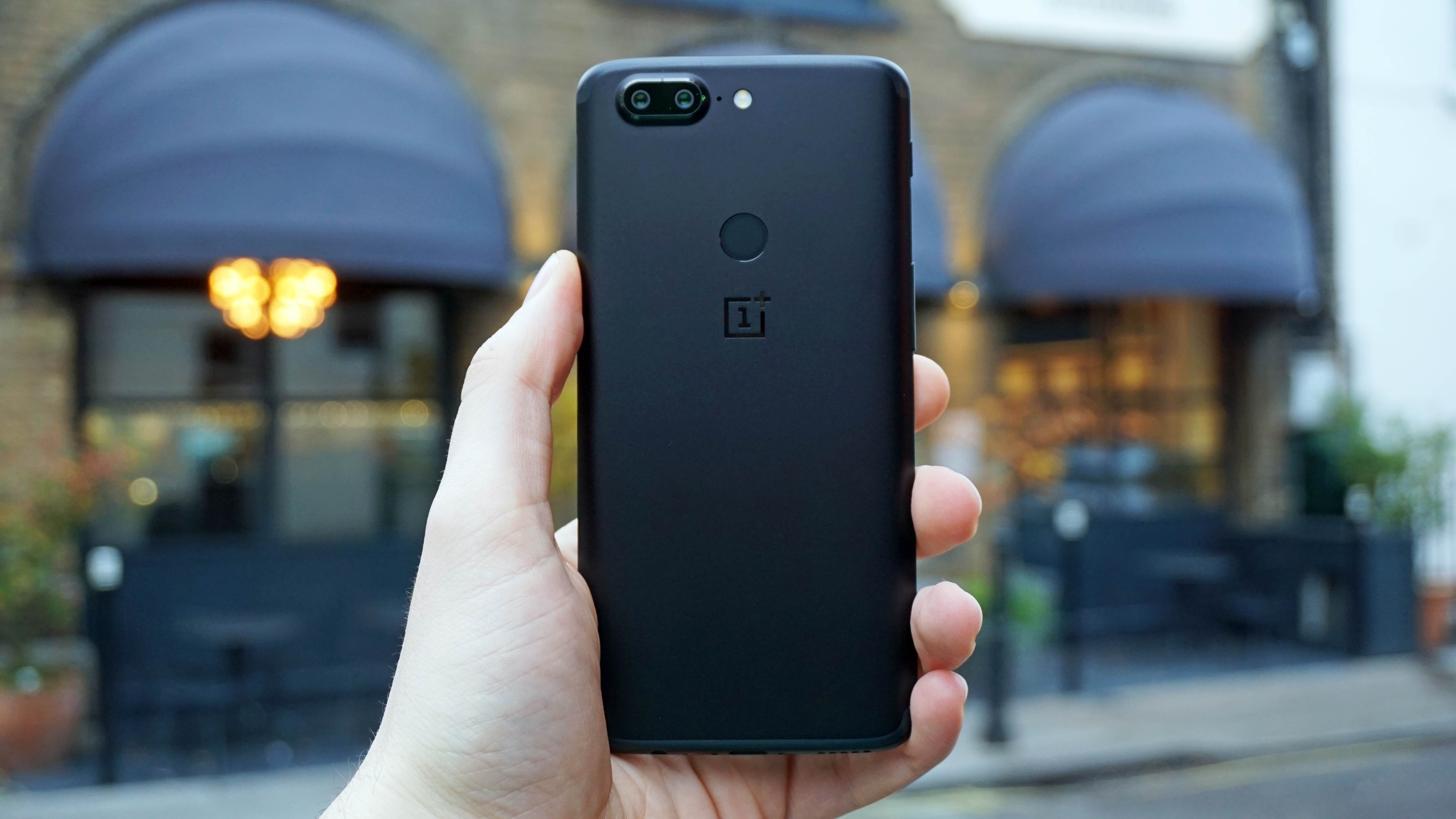
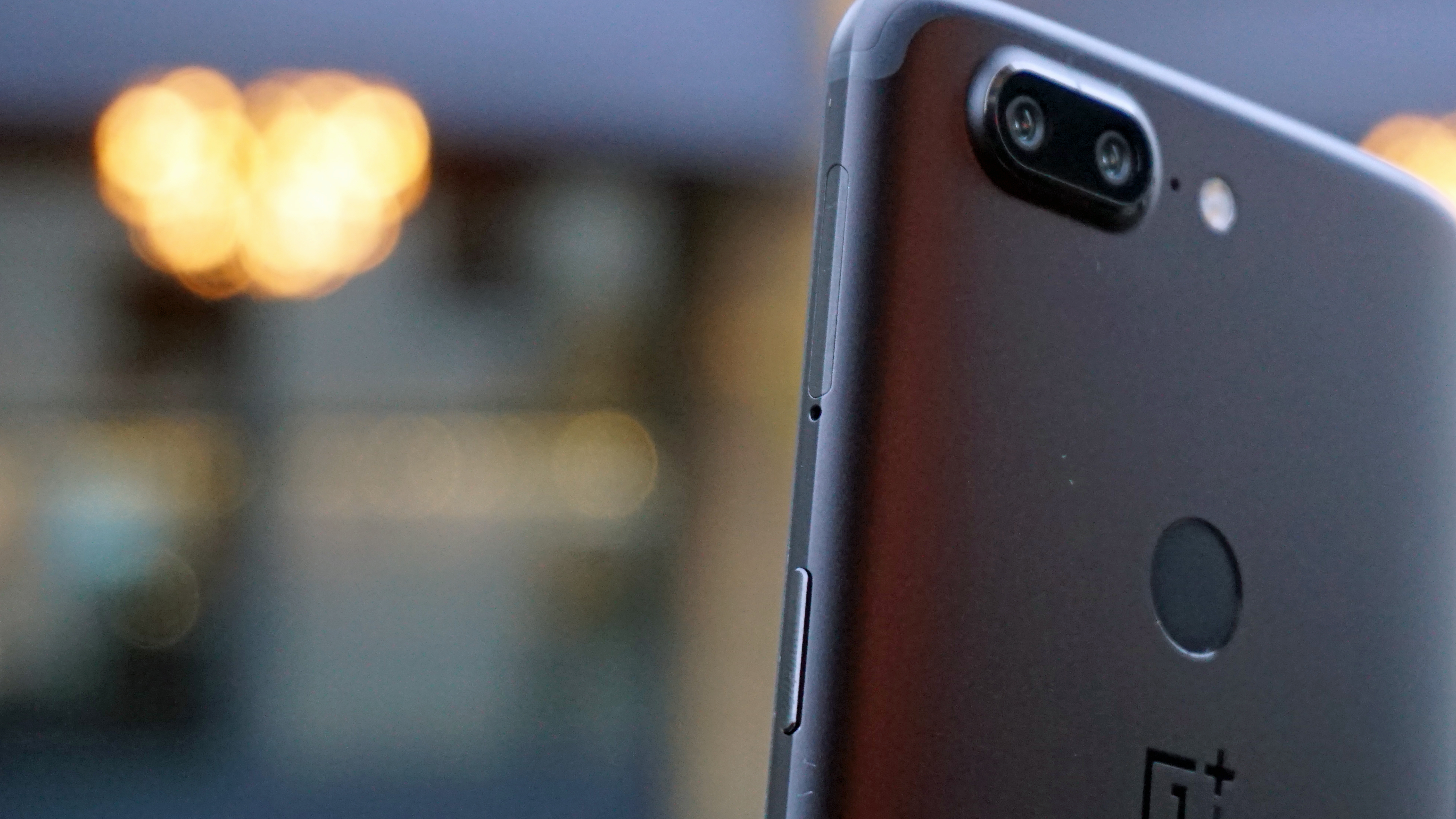
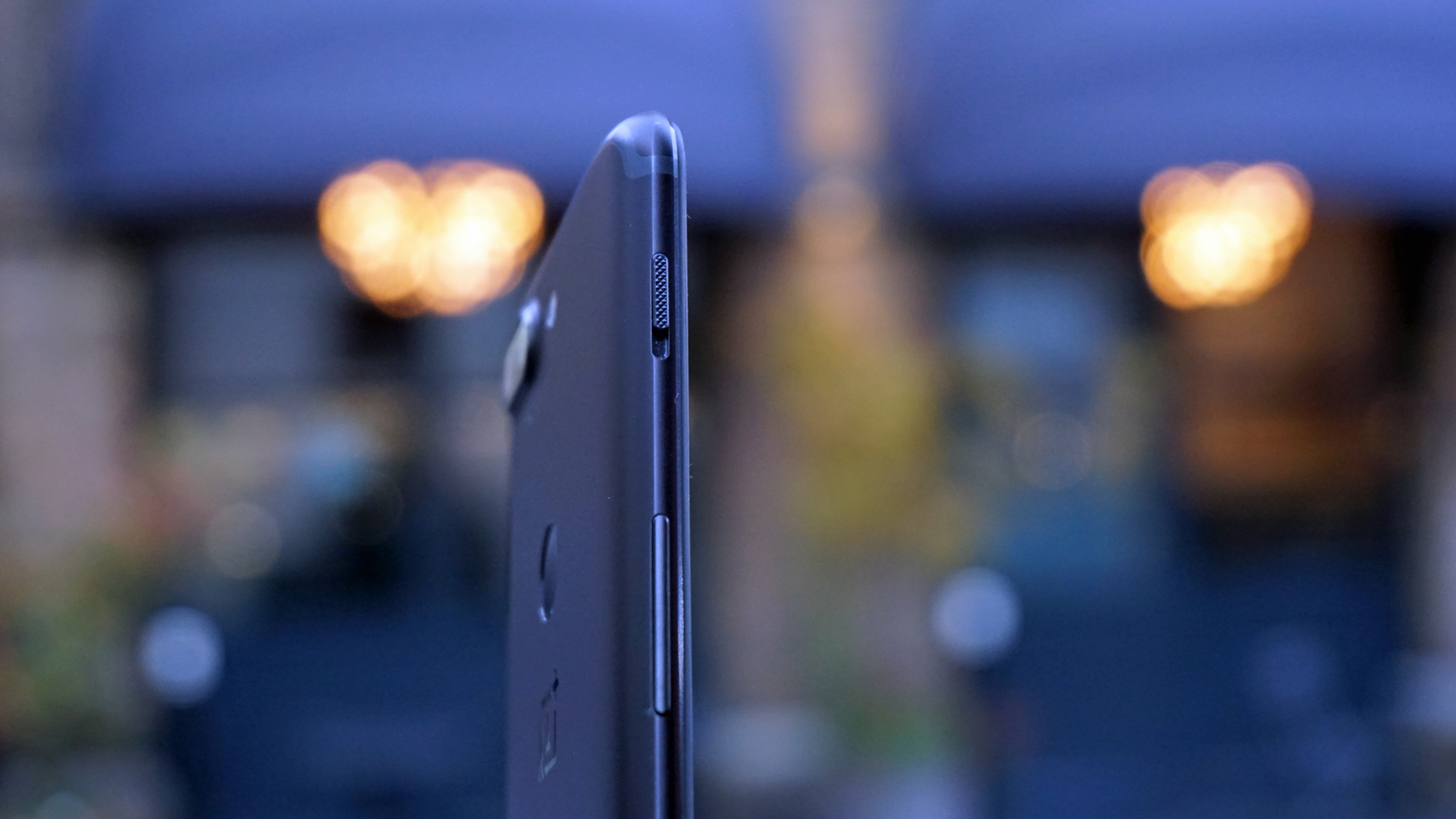


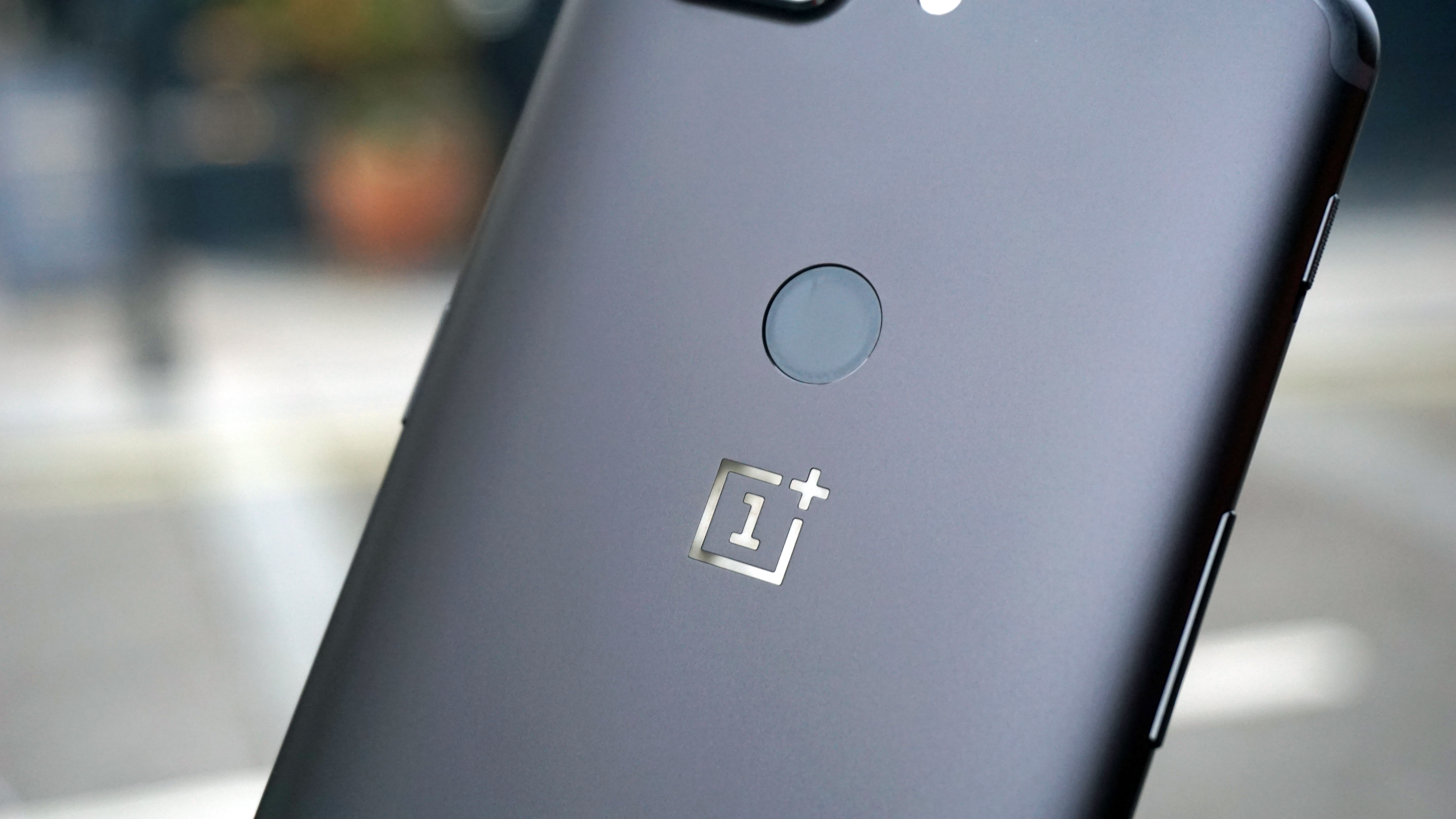
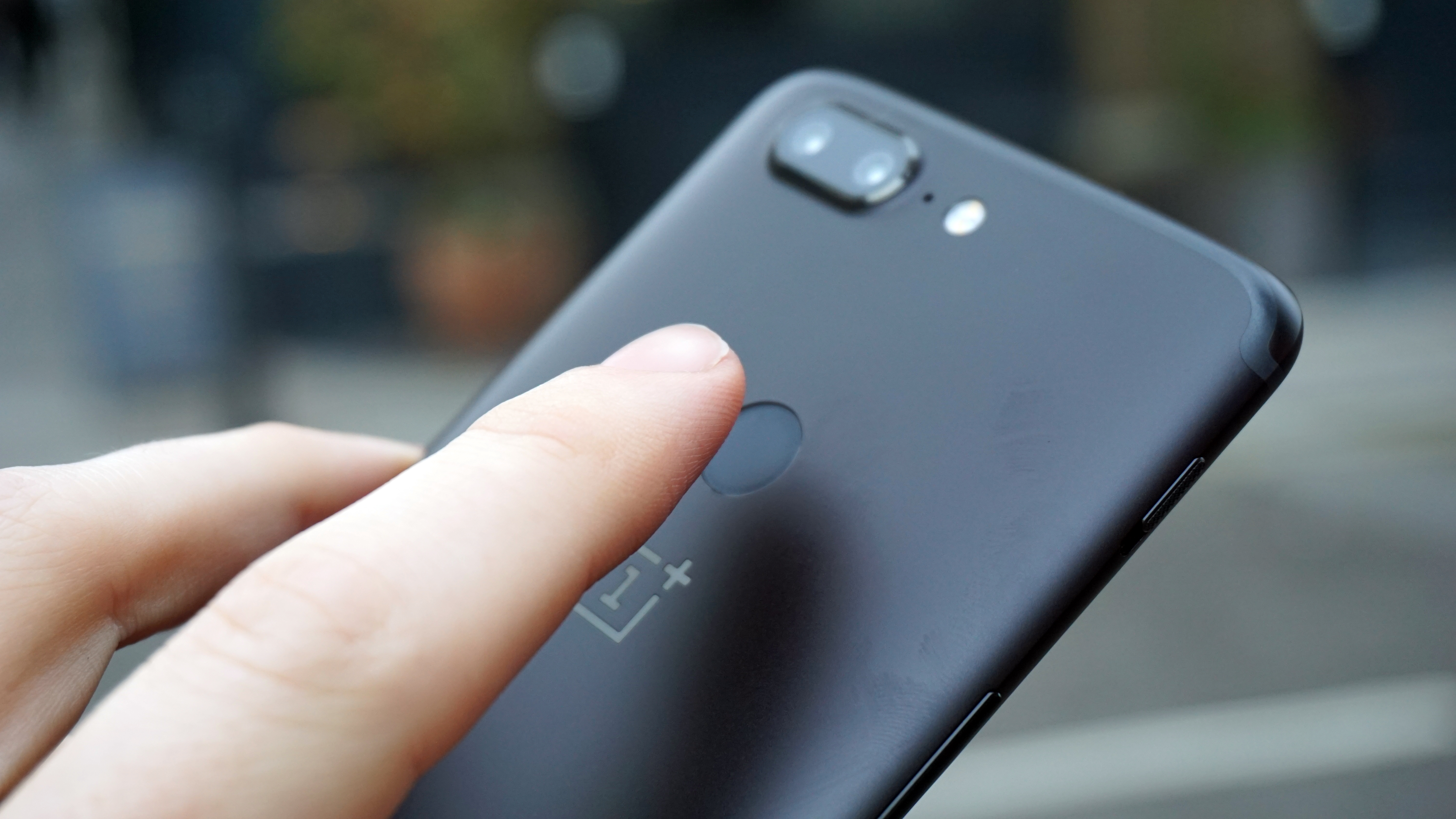
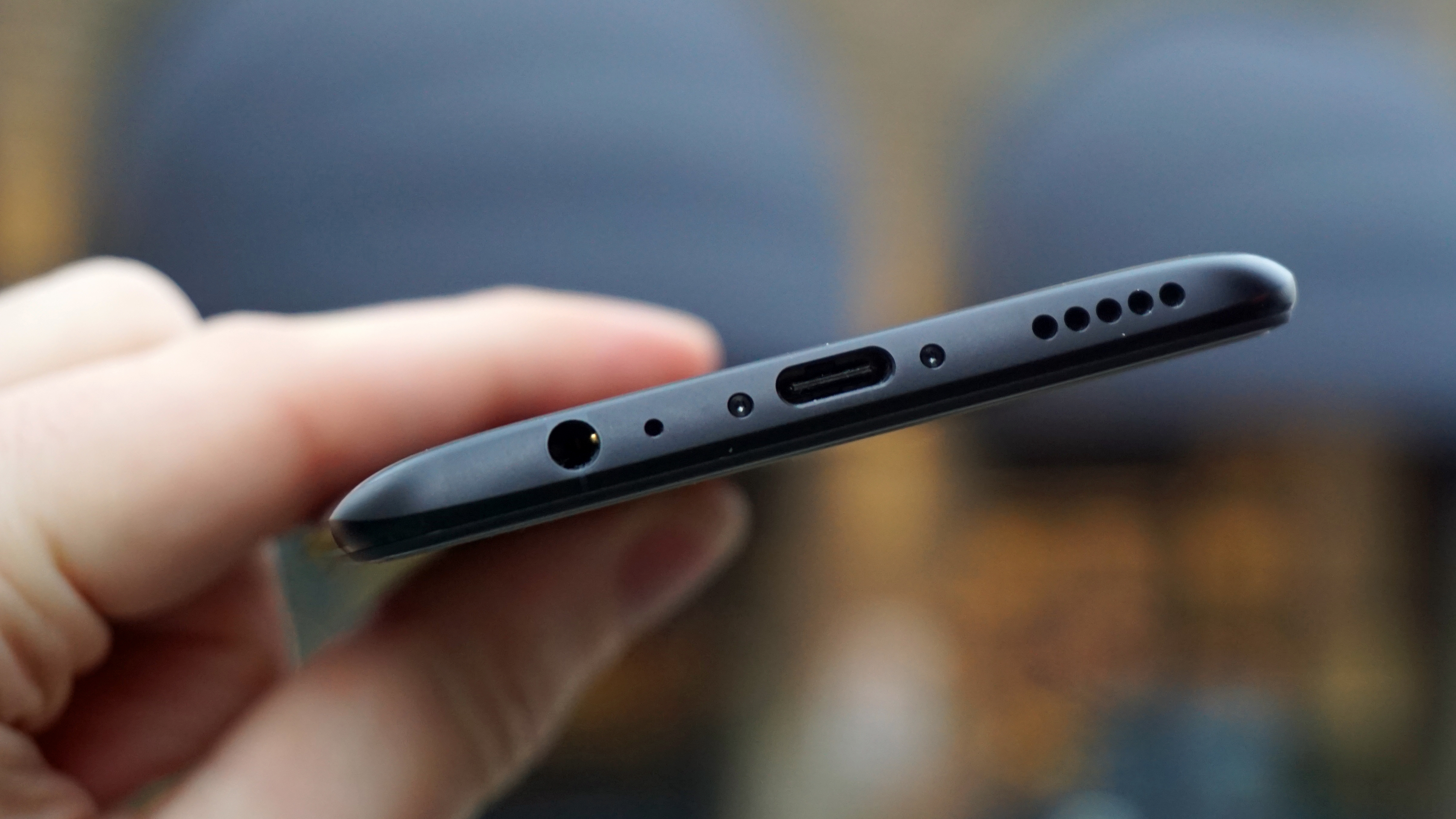
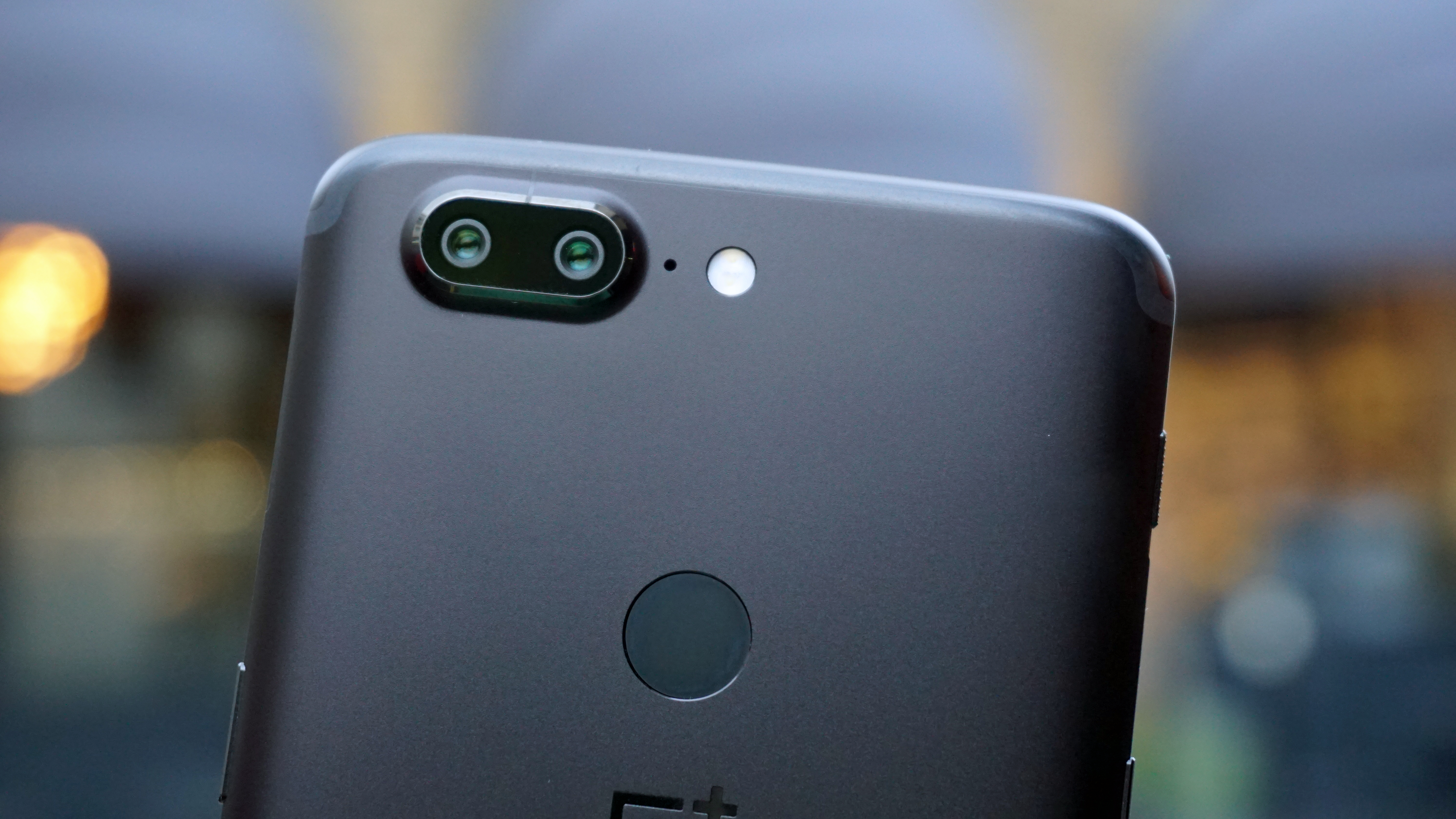

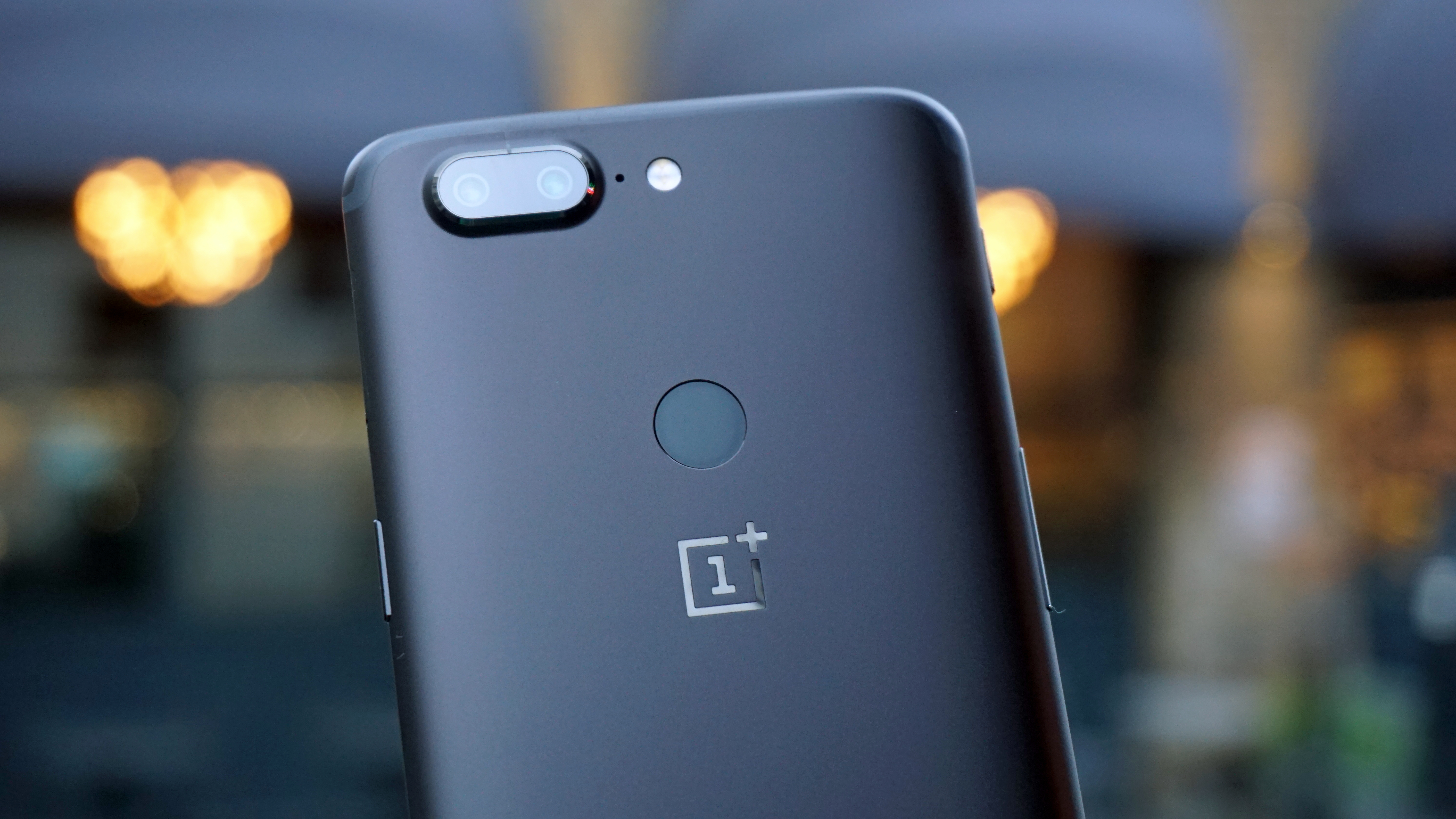
Something the design doesn't offer, though, is much grip, so you may want to invest in a material or silicone case to give you a little extra purchase – although it will add to the phone's size in your hand.
You'll find that the power/lock key on the right, and the volume rocker on the left, fall easily under thumb and finger when you're holding the phone in portrait, and OnePlus continues with its notification slider on the side of the handset, allowing you to easily switch between silent, do not disturb and loud modes.
At launch it was available in just one color (Midnight Black), but in January 2018, OnePlus launched a new color variant of the OnePlus 5T, the limited edition Sandstone White finish.
First of all it's white (duh), but only on the back. The front of the handset remains black, as does the rear camera bump. While we would have liked a white surround on the front too, we do like the black camera bulge.
The Sandstone White OnePlus 5T uses the same black volume rocker, power switch and SIM tray, providing more contrast against the white finish. Then there's the alert slider, which is an eye-catching red.
OnePlus 5T Sandstone White hands on gallery
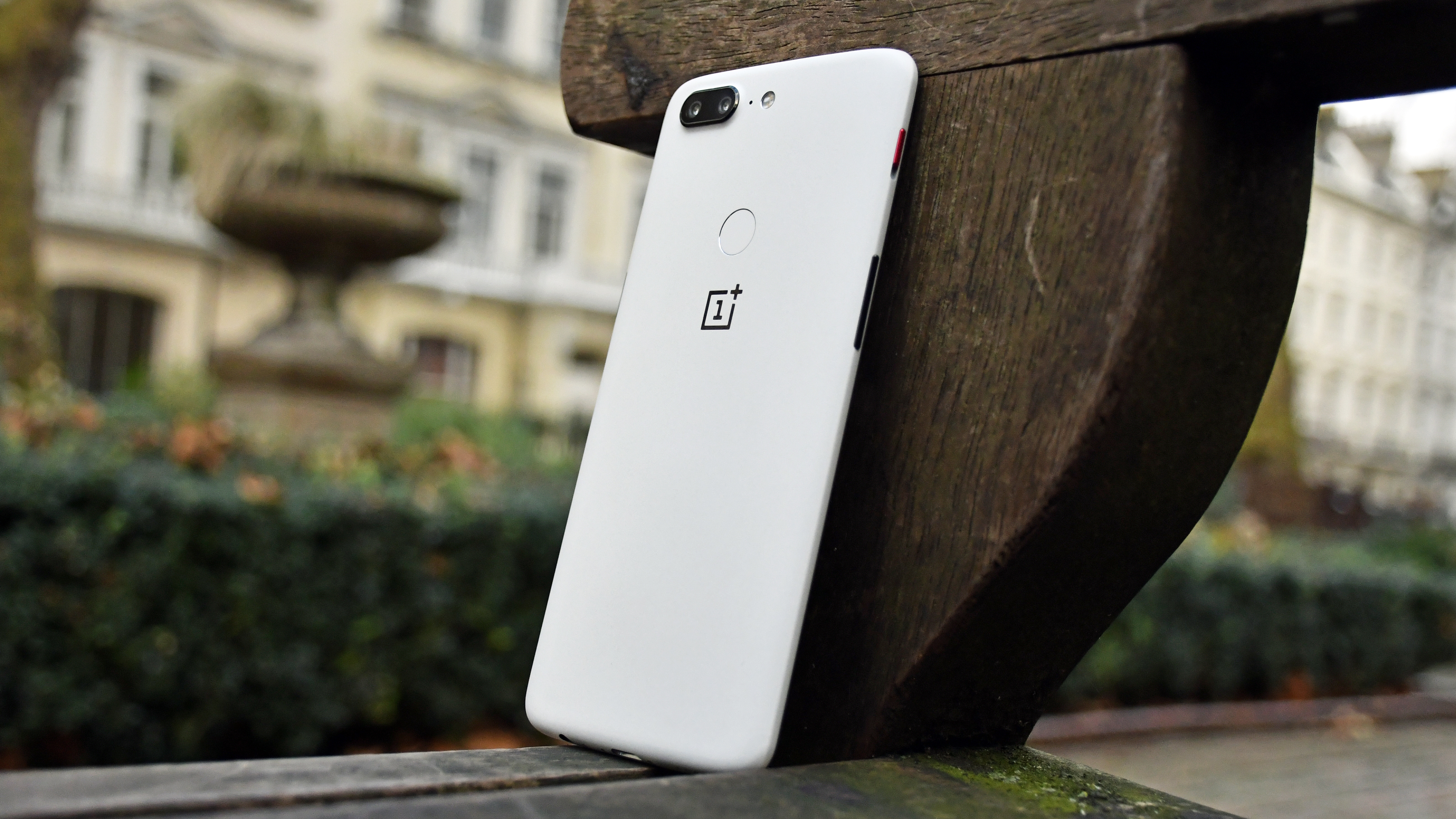
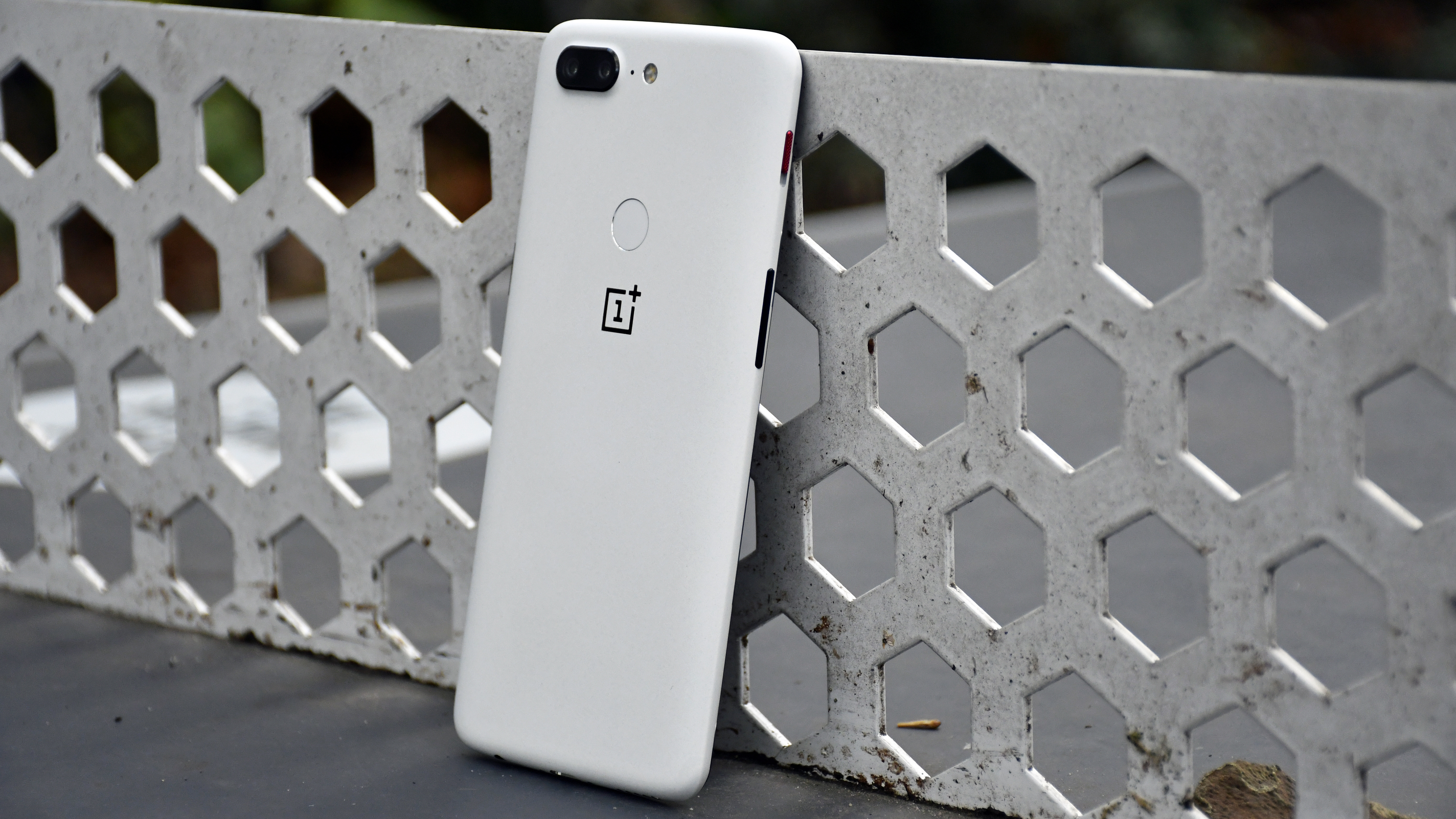
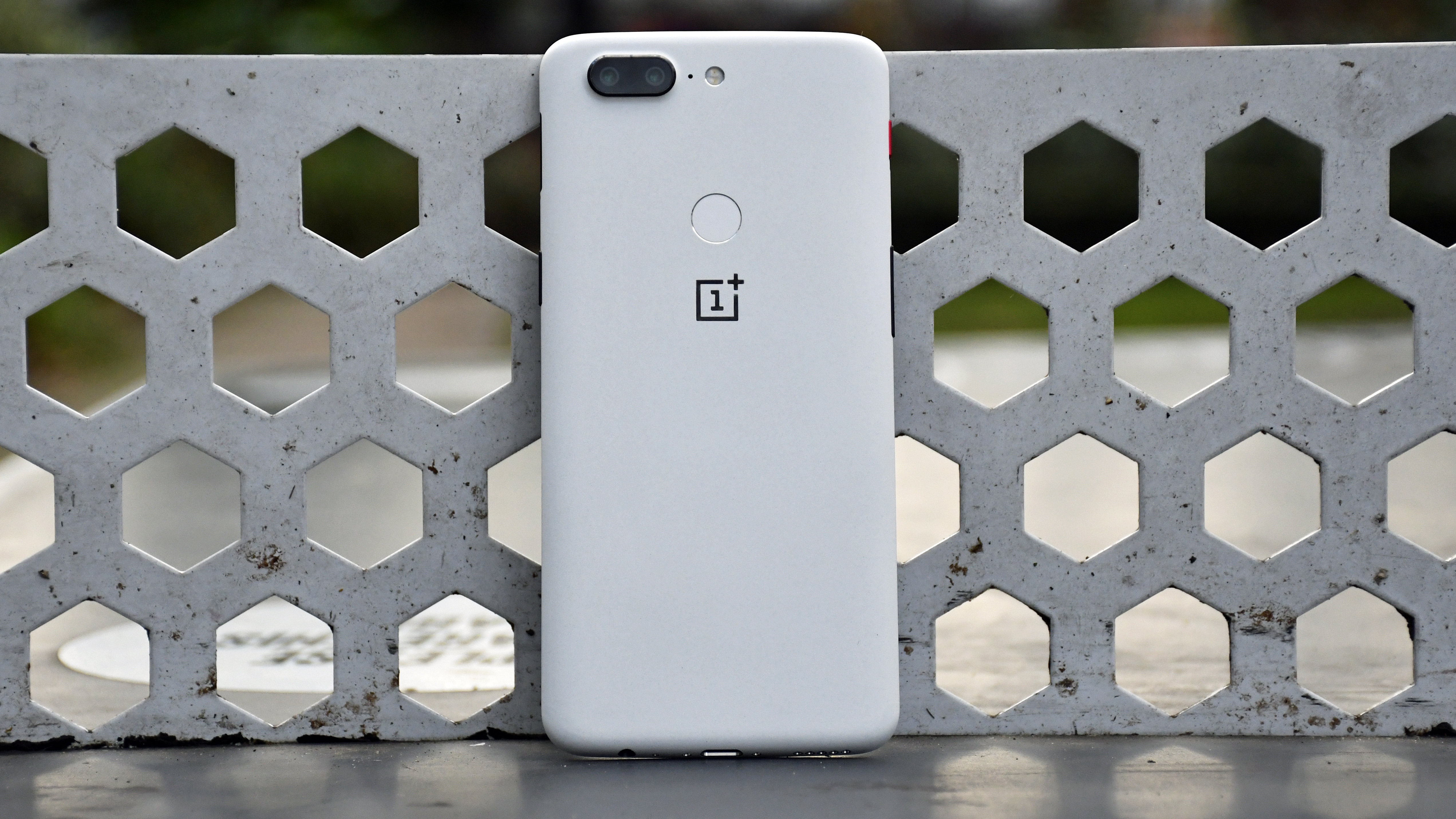
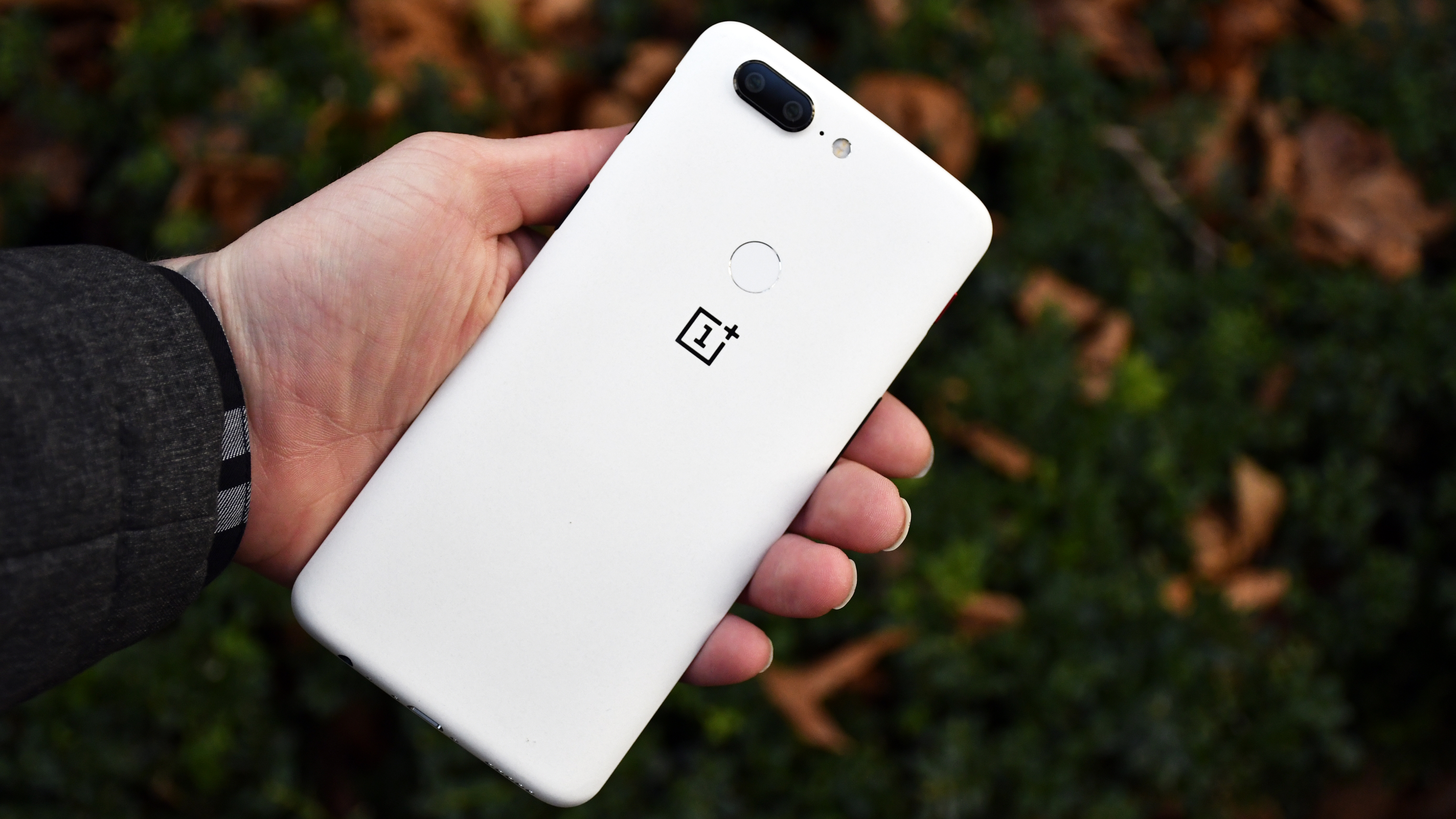
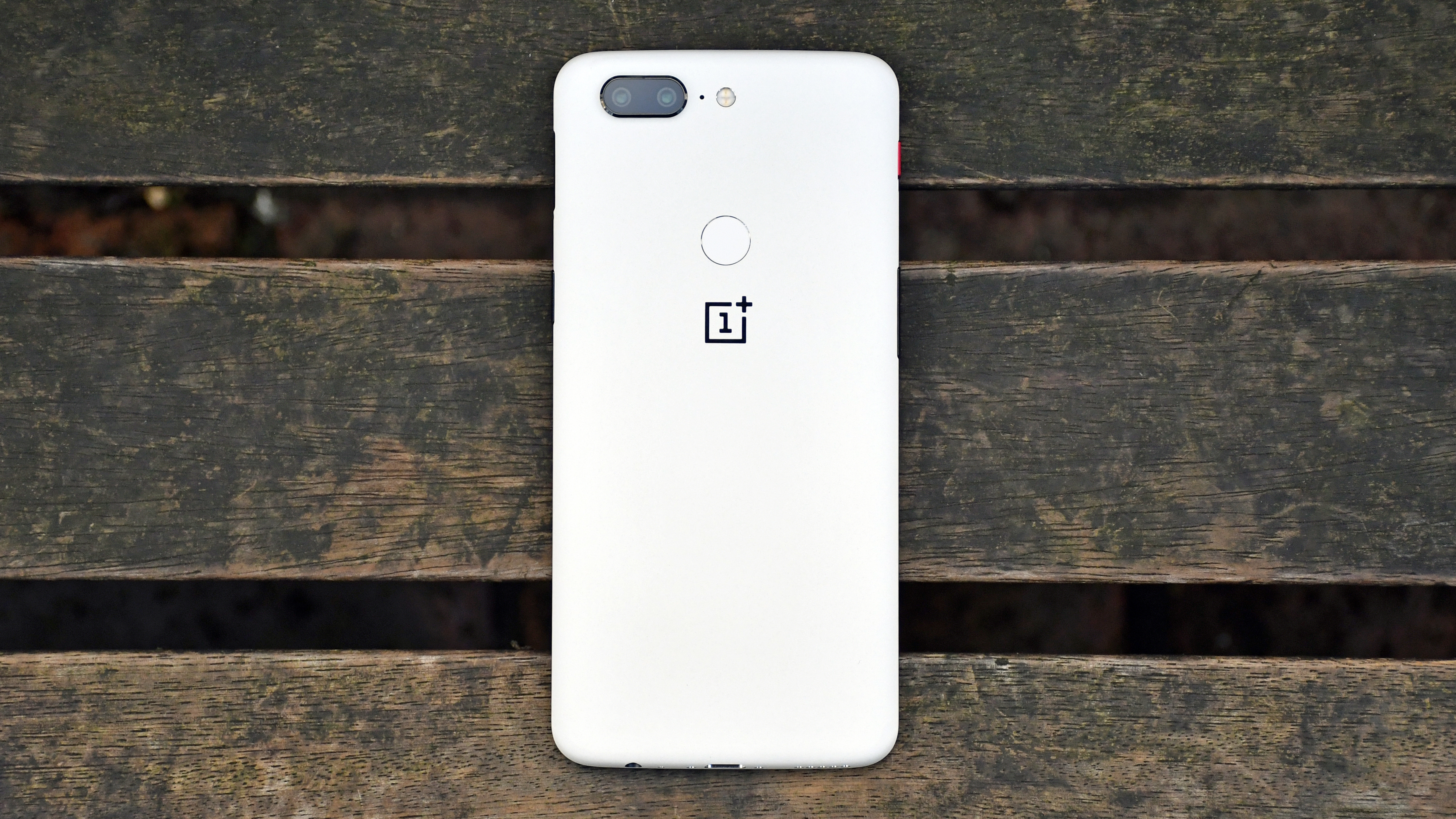
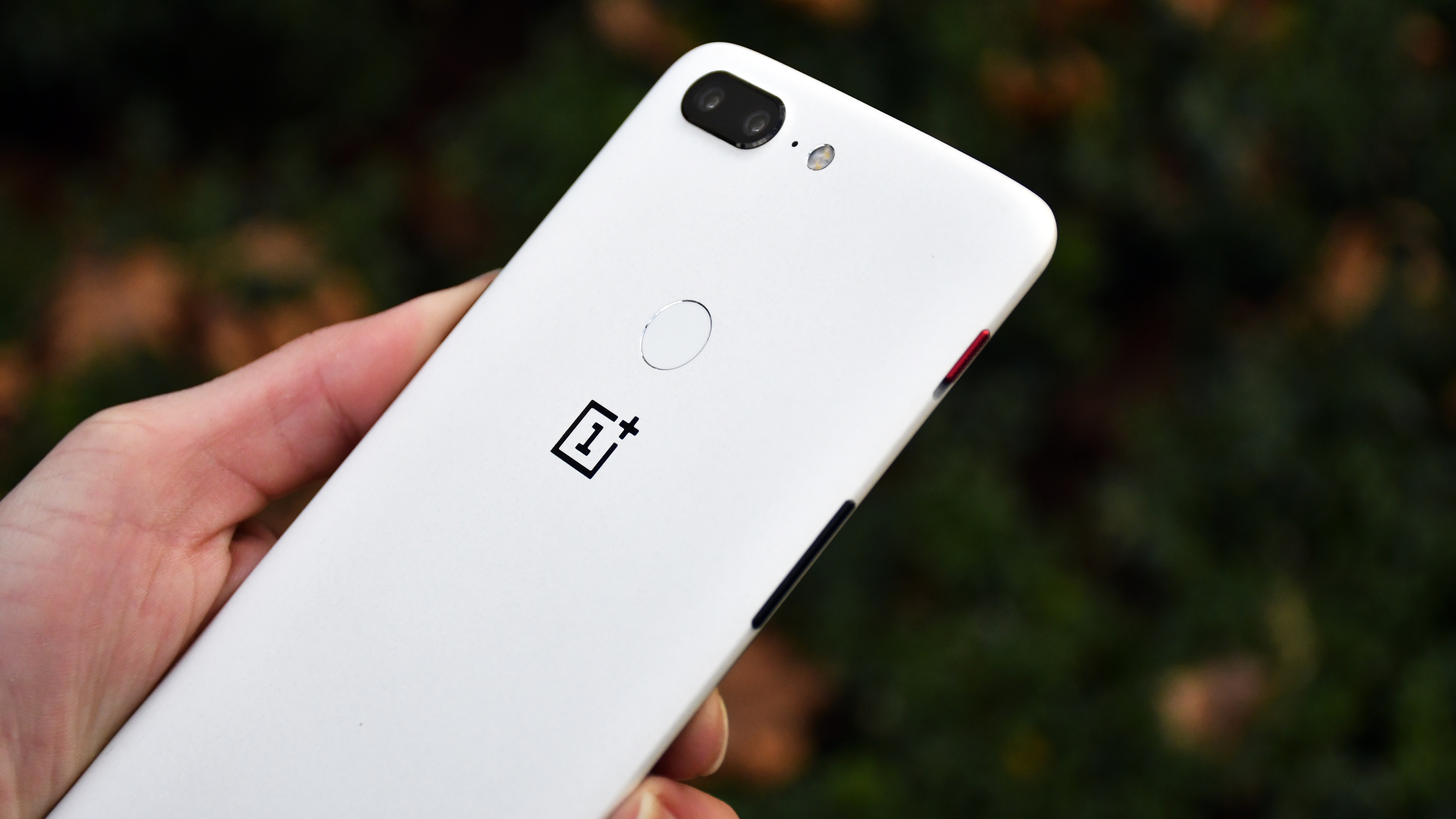
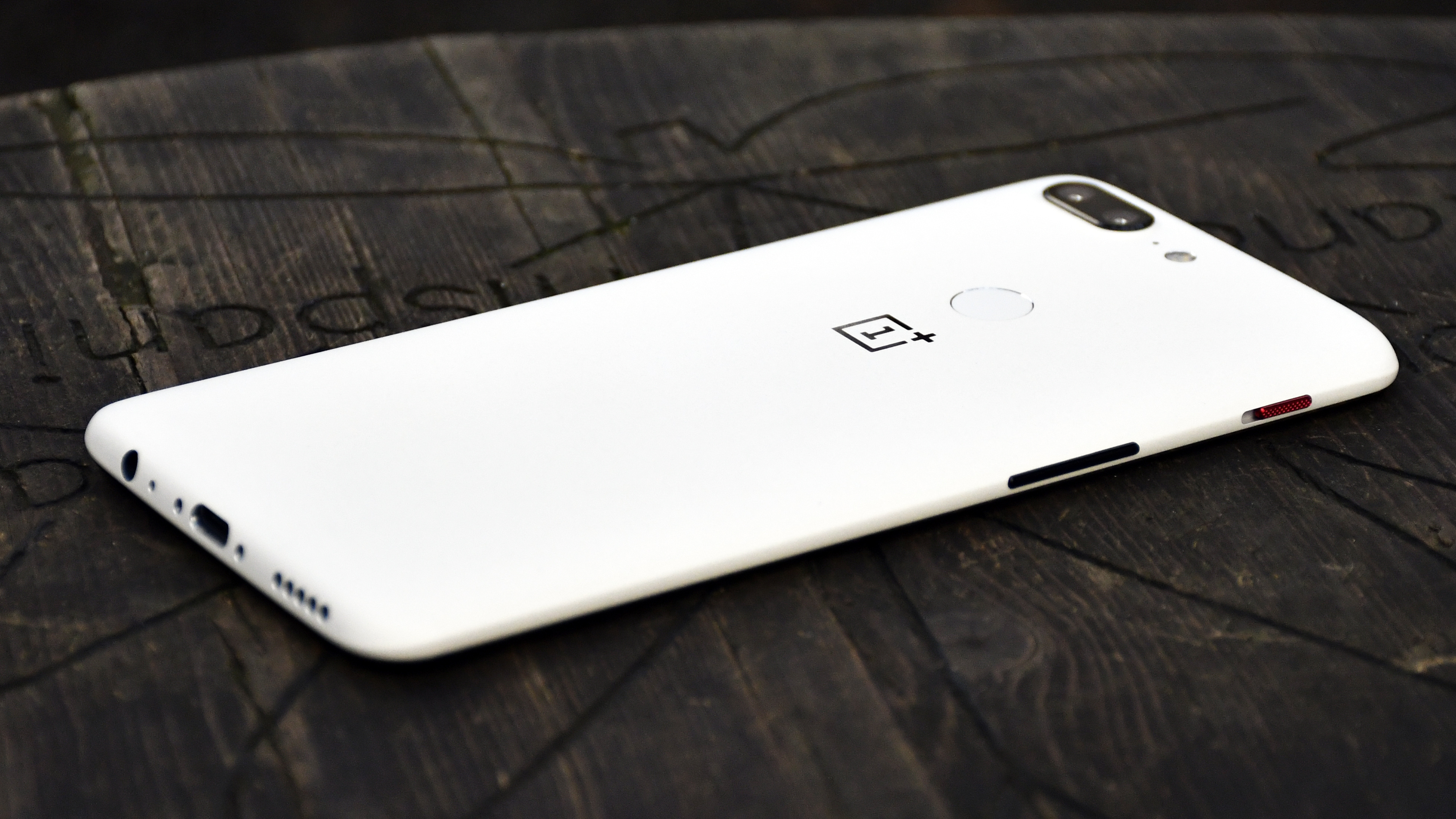
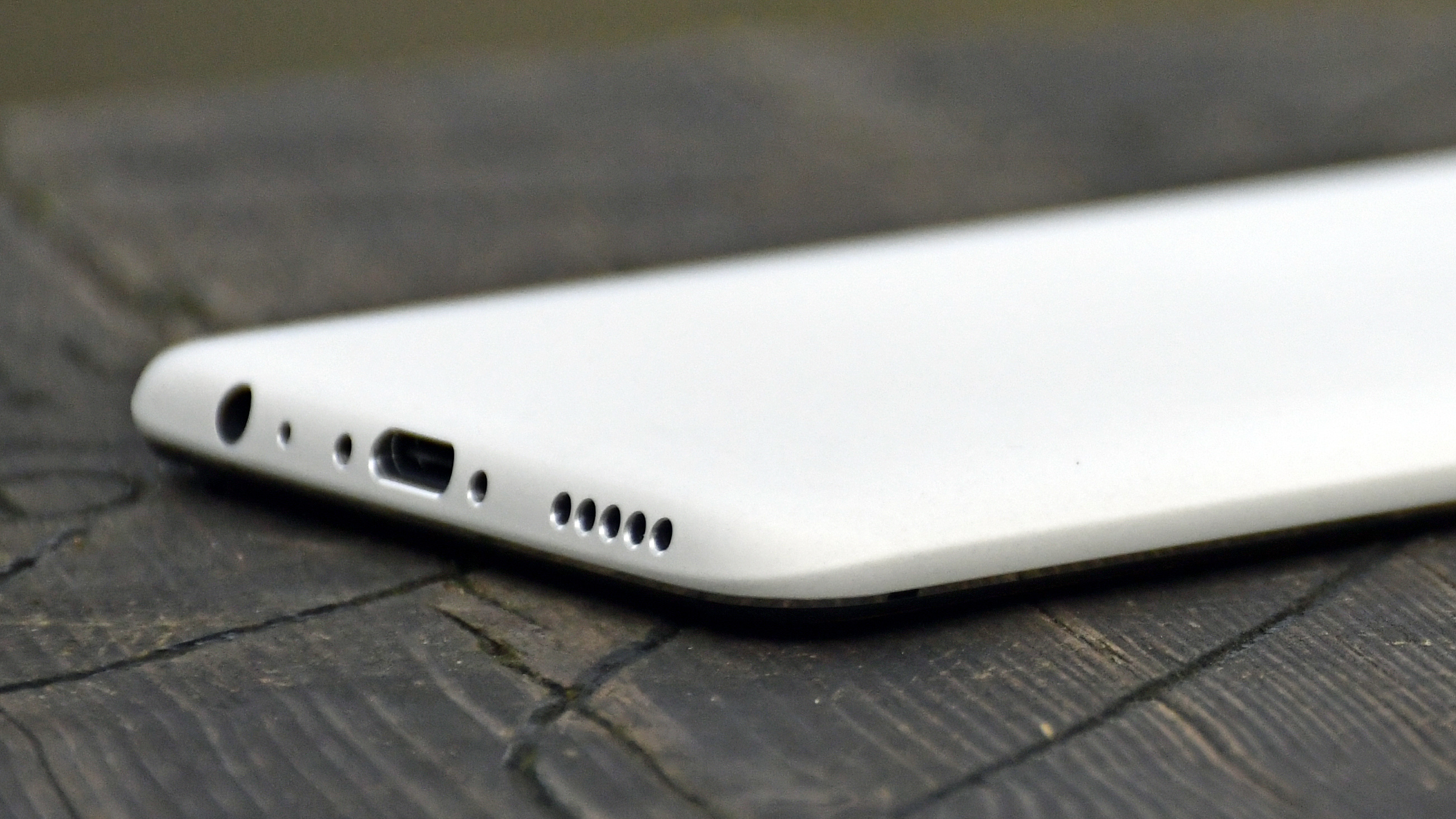
If this looks familiar, it's because it's exactly the same color composition OnePlus used for the Star Wars Edition of the handset (launched in just a handful of countries) minus the famous franchise's logo on the back.
What the white finish does provide is more grip, with a textured finished which more closely resembles the original OnePlus One. The trade-off is the white version doesn't feel as premium in the hand, and if the OnePlus One is anything to go by it could end up getting quite dirty relatively quickly.
The white variant sold out in a few weeks, and it was swiftly followed by the introduction of the Lava Red OnePlus 5T in February 2018. Again, it's a strictly "while stocks last" type of deal, and is only available on the more expensive 128GB model. Like the Midnight Black version, Lava Red is fully metal, meaning a slippery body front and back.
OnePlus 5T Lava Red hands on gallery
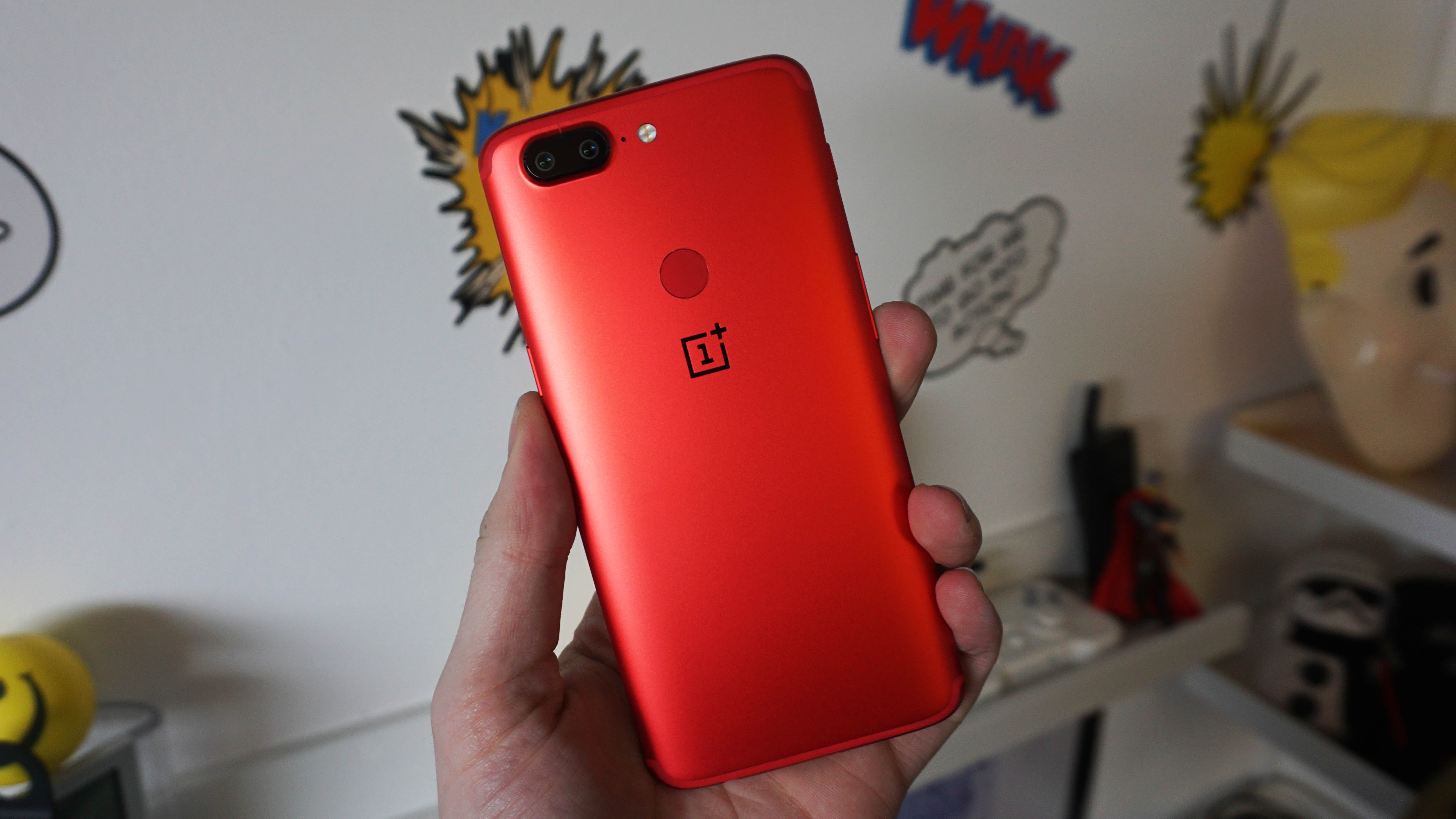
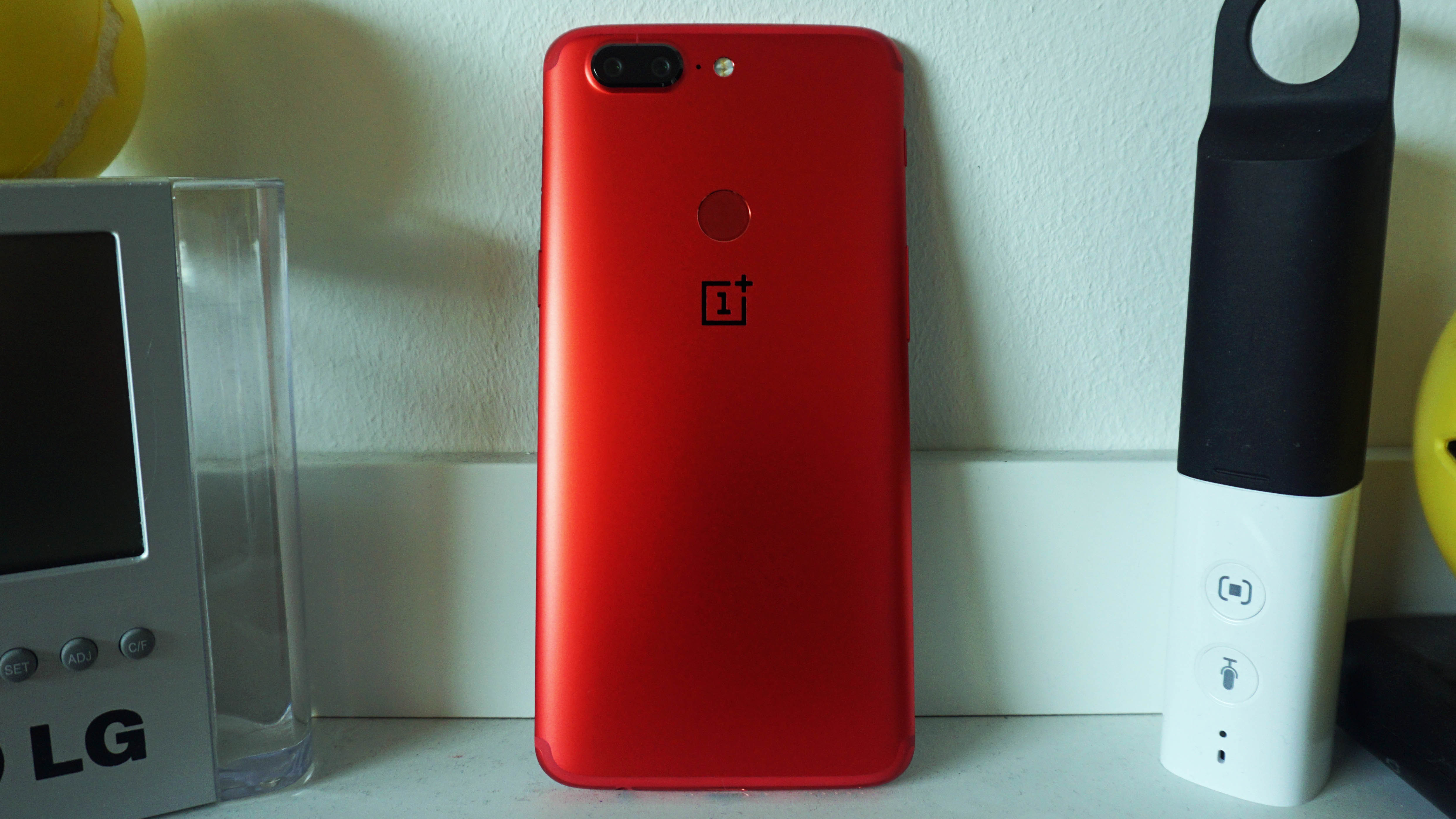
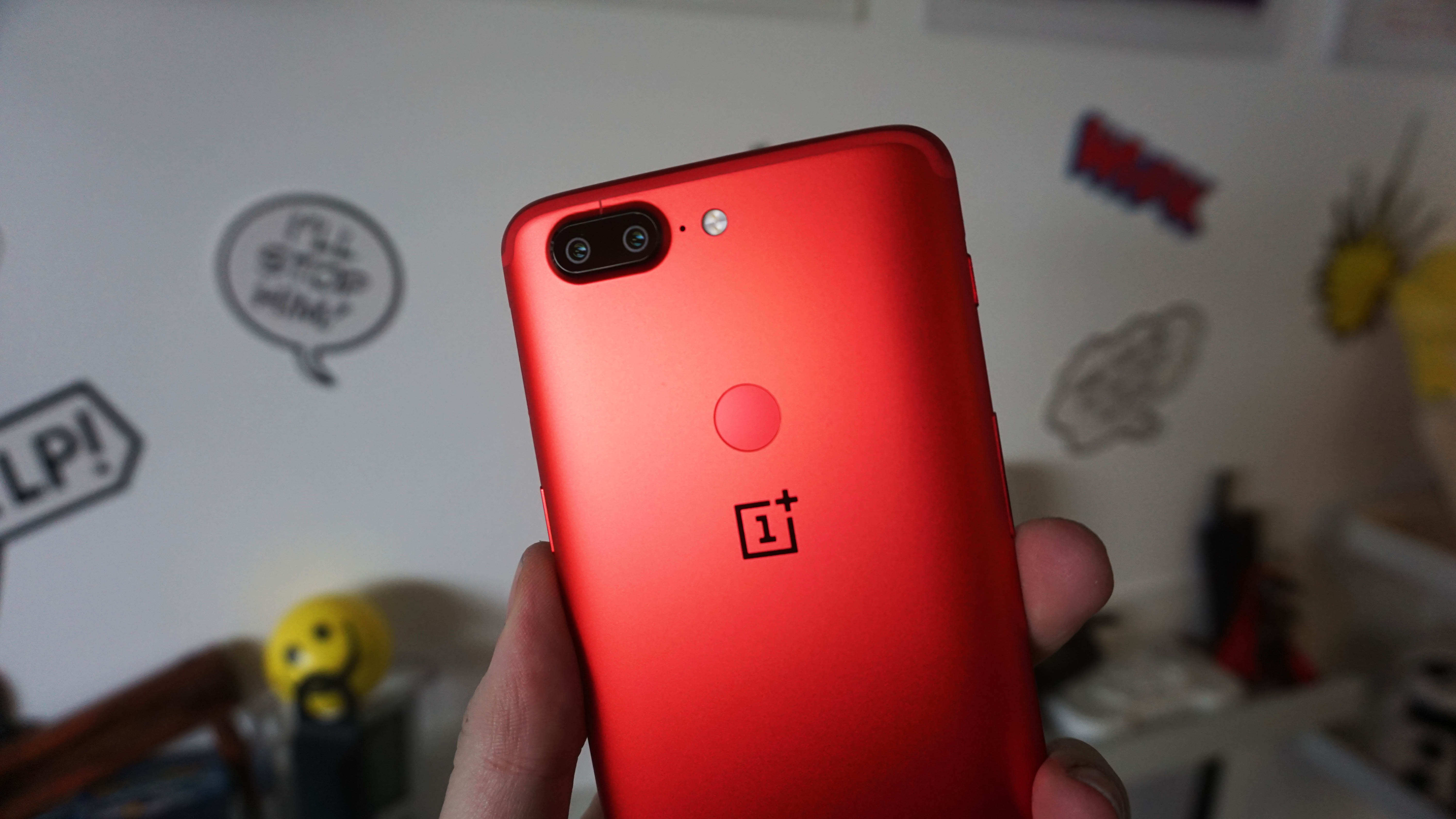
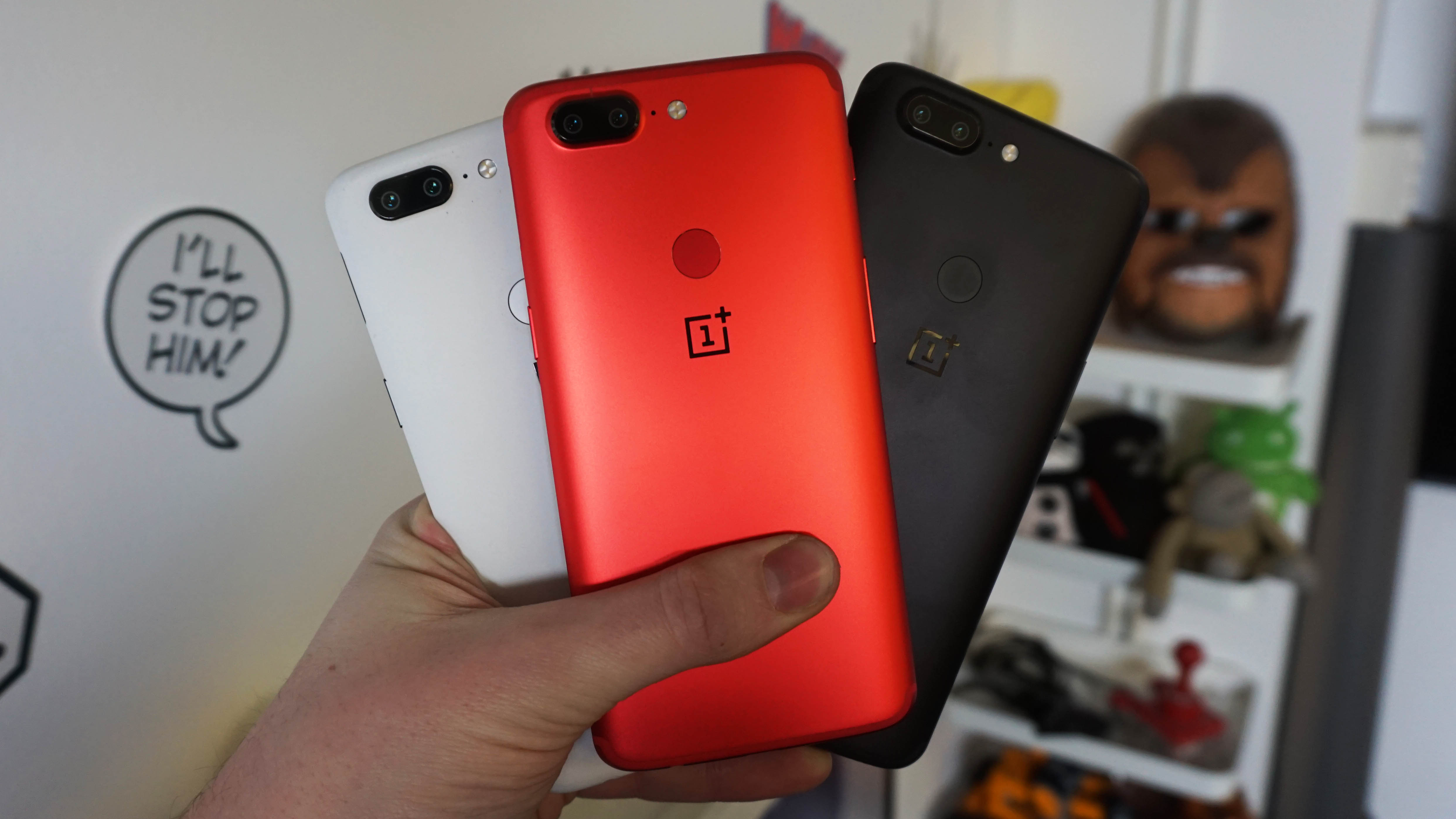
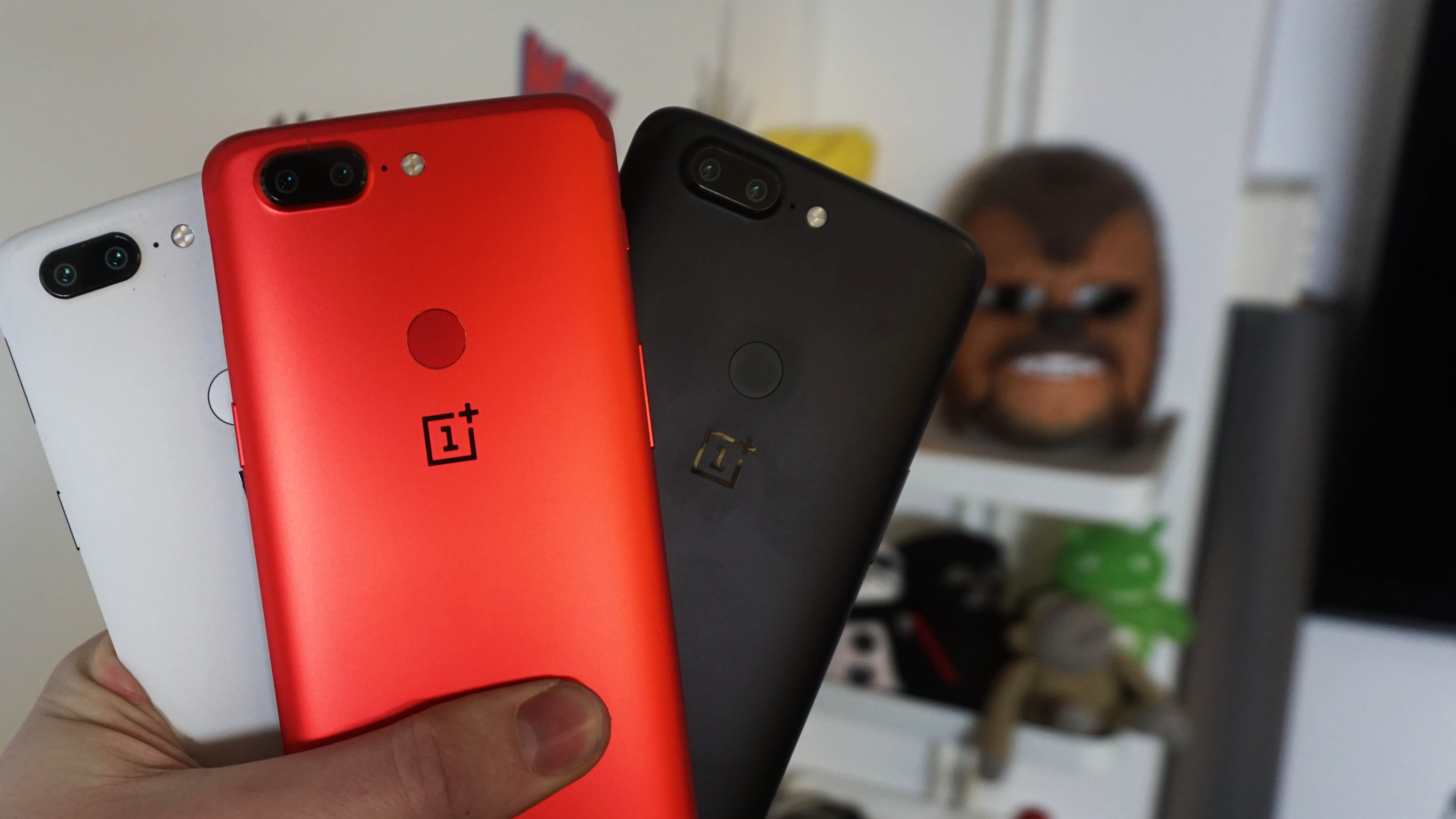
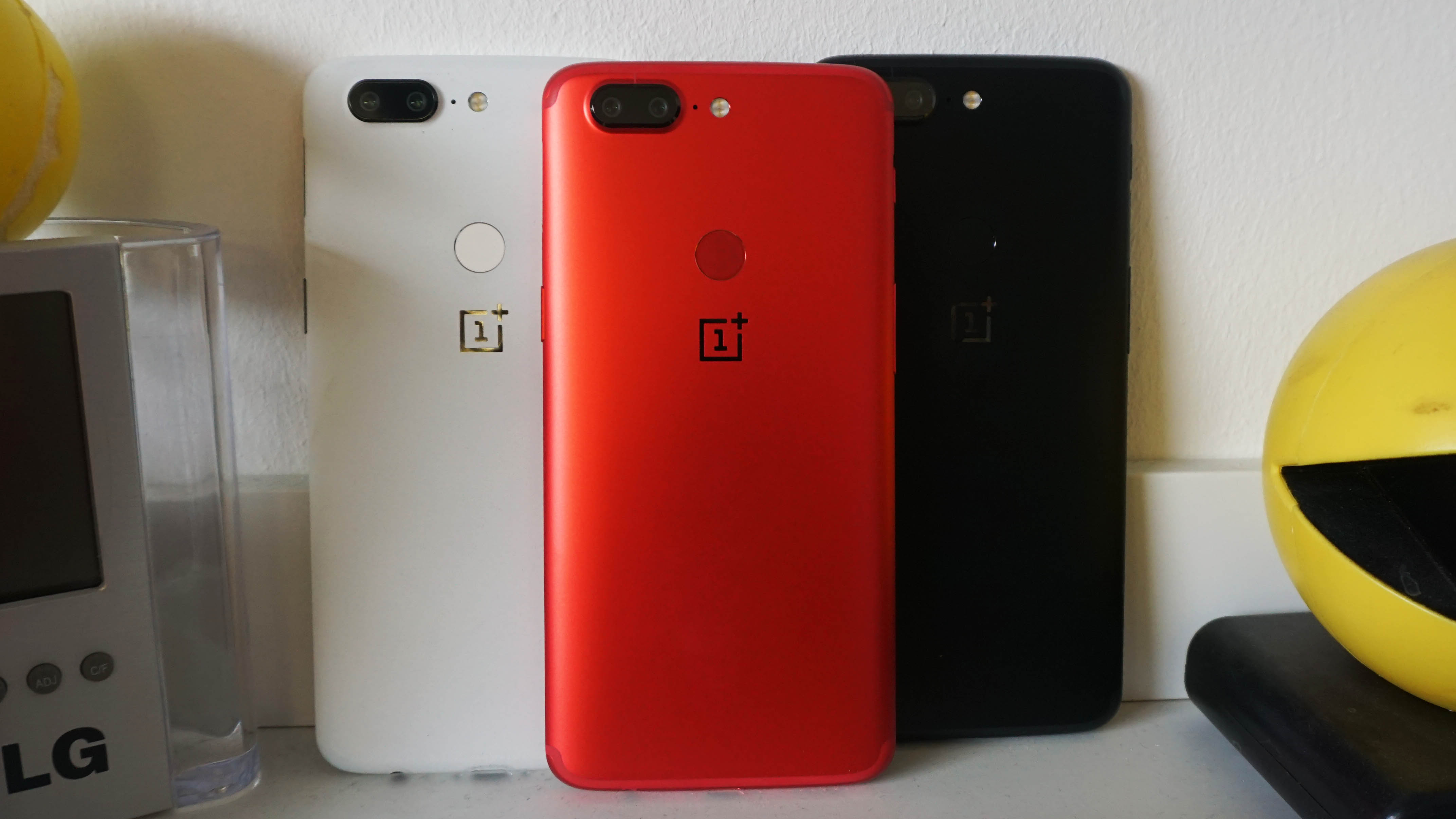
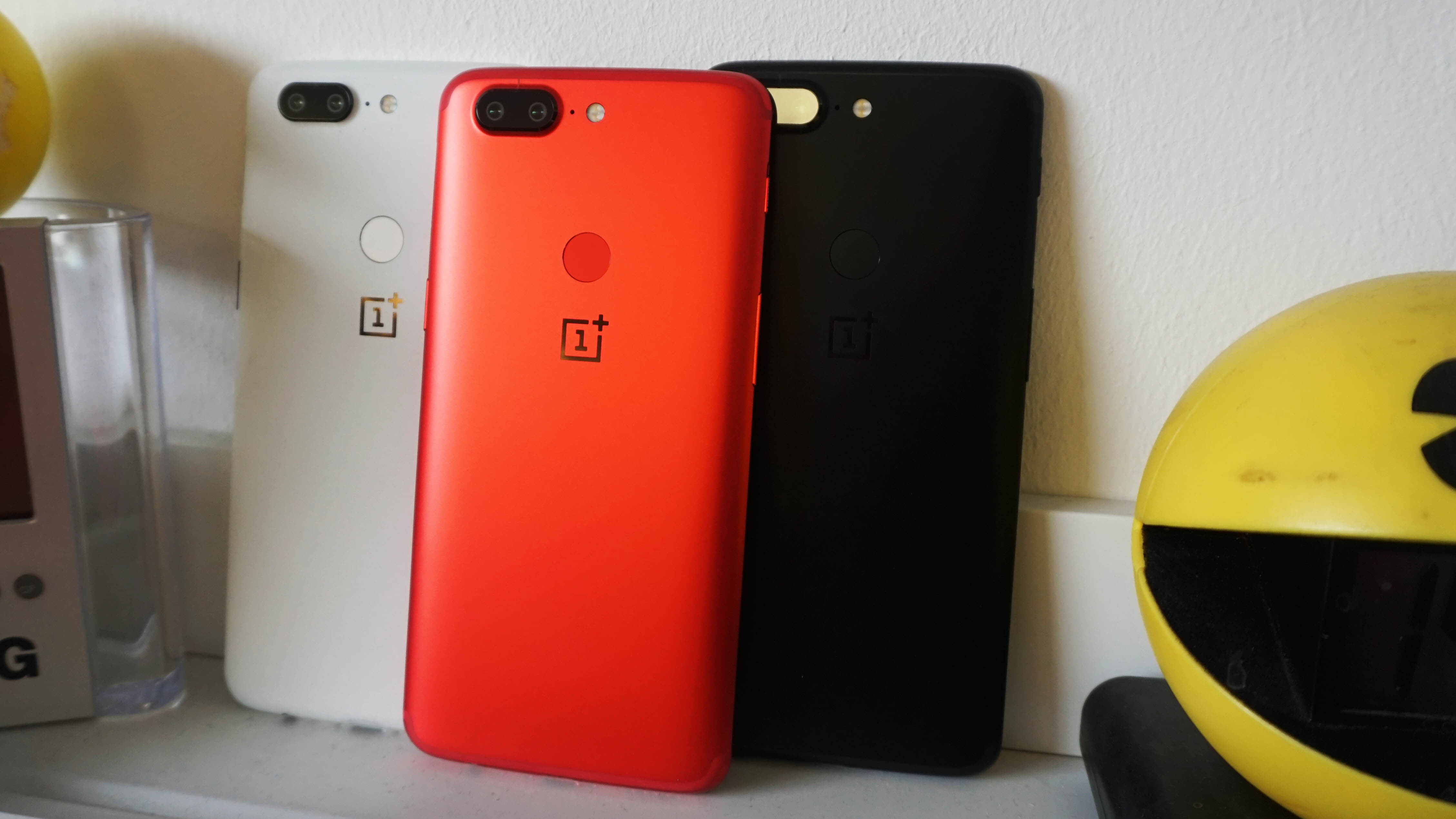
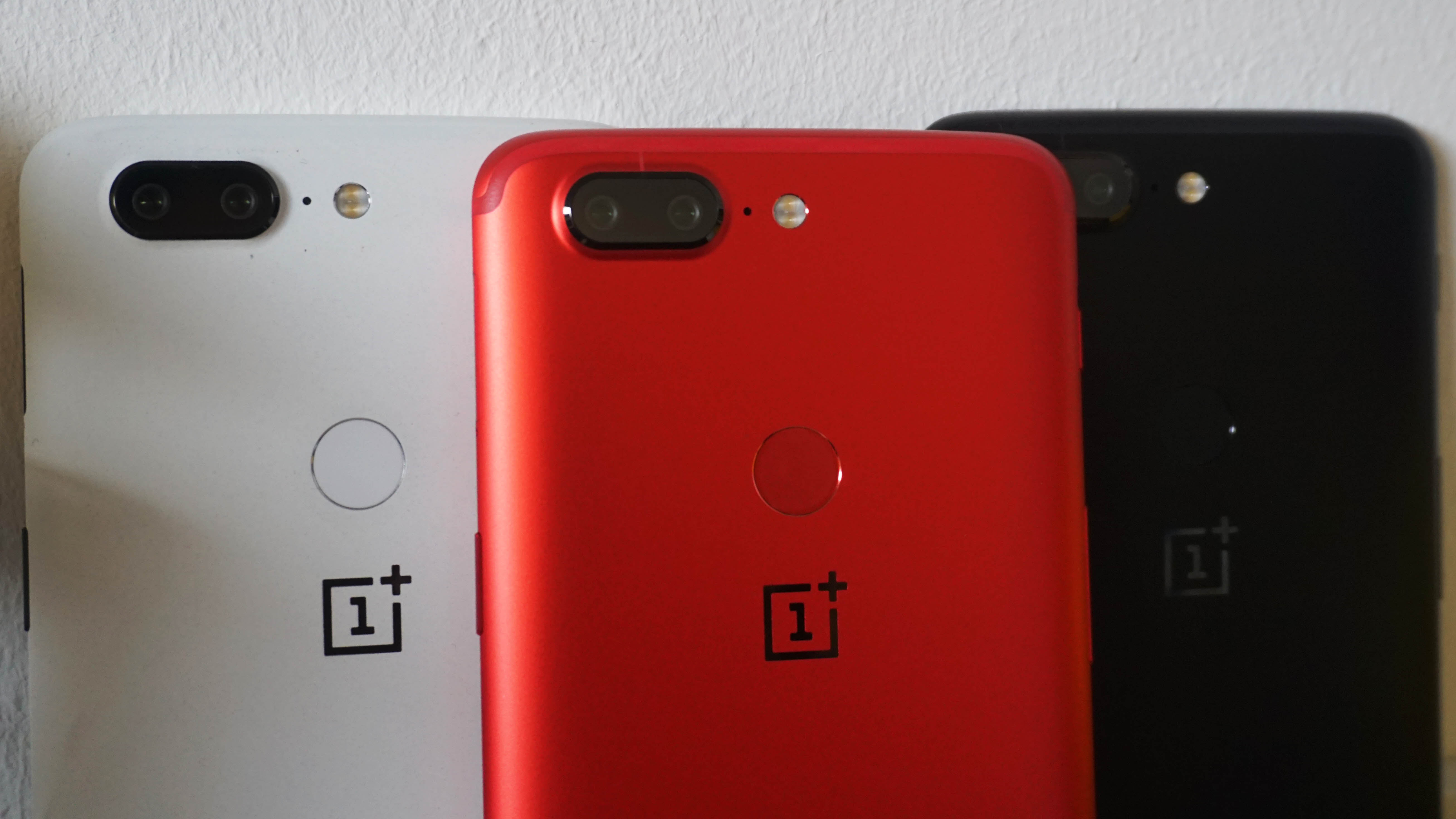
It's worth noting that OnePlus provides a clear plastic case in the box with both the Midnight Black, Sandstone White and Lava Red models, which should keep it looking smarter for longer.
Another plus point on the OnePlus 5T is that the headphone jack has also been retained, allowing you to plug in your headphones without the need for a clunky adapter.
The camera bump from the OnePlus 5 remains on the 5T, but this time around the edges of the protrusion have been more lovingly sculpted into the main body of the device for a more uniform and slick look.
OnePlus claims it has added an anti-fingerprint layer to the finish on the OnePlus 5T, but we found that it still got grubby pretty easily, although marks and prints are easy enough to wipe off.

Face recognition
- Fast, easy and effective
- Not as accomplished as iPhone X
Another key feature, and a first for OnePlus, is the inclusion of face recognition tech as the brand attempts to ride the coattails of the iPhone X.
Face recognition on the OnePlus 5T isn't as advanced as Apple’s offering, but it's still surprisingly good, using over 100 facial identifiers to check it's you.
It's used only for unlocking the handset, and you'll need to double-tap the screen or press the power key to utilize it.
The good news is that it's really easy to setup, with the phone requiring only a matter of seconds to lock in your look.
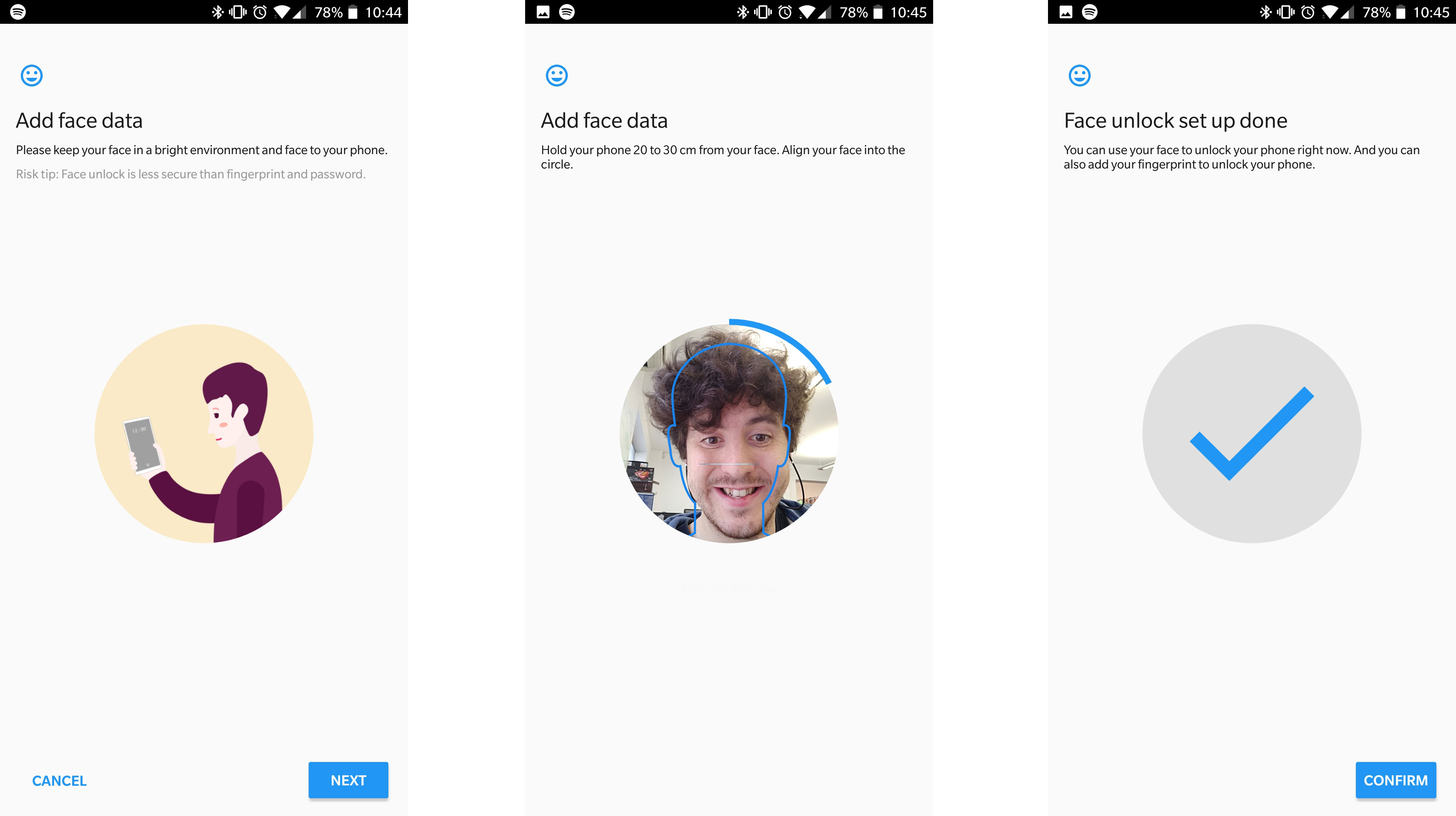
It's incredibly fast, with almost no delay between you tapping the screen or button and your home screen appearing before you. OnePlus claims the tech can identify you and unlock the handset in just 0.4 seconds, and we’re inclined to agree.
This does mean it’s a touch slower than the fingerprint scanner (0.2 seconds), and it requires you to be looking almost directly at the phone for it to work.
However, we did find that face unlock worked at some impressive angles, which means you don't have to hold the OnePlus 5T directly in front of your face for it to work.
Something it can't do, but which the iPhone X can, is see you in the dark. That's because, unlike Apple, OnePlus hasn't used an infrared camera to spy you in the dark.
Face unlock on the 5T requires a light source – street lights at night are enough, but the screen brightness itself isn't – to check your face.
The OnePlus 5T can handle glasses and no glasses, so whether or not you’re wearing them the phone will know it’s still you, as long as your eyes are still visible. Where it struggles is when the eyes are covered.

We tried face unlock in several different scenarios (as you can see above), but when we wore a low slung hat, and then blinkered goggles, the 5T wouldn’t unlock.
We also passed it around the office, friends and family to see if anyone else’s face unlocked the handset, and the good news is they didn’t. The likelihood is that the technology may be fooled on rare occasions – as it has been on the iPhone X – but it feels secure.
In the future OnePlus plans to expand the use of face recognition to enable you to log in to apps and verify purchases, but for now it's using the OnePlus 5T as a test bed for the technology to make sure it's secure.
- Get the best deal on One Plus products with our One Plus promo codes.

TechRadar's former Global Managing Editor, John has been a technology journalist for more than a decade, and over the years has built up a vast knowledge of the tech industry. He’s interviewed CEOs from some of the world’s biggest tech firms, visited their HQs, and appeared on live TV and radio, including Sky News, BBC News, BBC World News, Al Jazeera, LBC, and BBC Radio 4.
